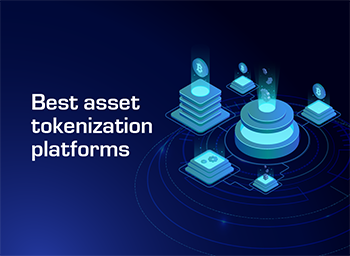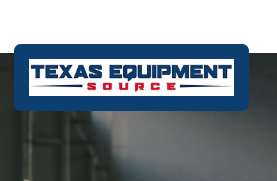The financial world has entered a new phase of transformation, driven by the integration of blockchain technology into traditional systems. While digital assets such as cryptocurrencies have often dominated headlines, a quieter but equally powerful innovation is taking shape. This development involves linking tangible, real-world assets with blockchain networks, creating a new model for ownership, trading, and investment. At the center of this evolution is tokenization, which is rapidly reshaping how global markets perceive value.
Understanding the Concept
At its core, Real World Asset Tokenization refers to the process of converting ownership rights of physical or traditional assets into digital tokens recorded on a blockchain. These assets may include real estate, commodities like gold or oil, equities, debt instruments, or even art and collectibles. Each token serves as a digital representation of a fraction of the underlying asset, enabling investors to buy, sell, or trade ownership in ways that were once impractical. Blockchain technology ensures transparency and immutability, making every transaction traceable and verifiable while reducing dependence on intermediaries.
How Tokenization Works
The tokenization process begins with selecting an asset suitable for digital representation. A legal structure is created to ensure that ownership rights or claims tied to the asset are accurately reflected in the tokens. These tokens are then issued on a blockchain using smart contracts, which automate processes such as profit distribution, compliance monitoring, and ownership transfers. Once issued, the tokens can be traded in primary offerings or on secondary marketplaces, introducing liquidity into assets that were traditionally illiquid. This transformation allows assets like commercial property or private equity shares to become accessible to a much broader pool of investors.
Advantages for Investors
Tokenizing real-world assets offers multiple advantages for investors. One of the most significant is liquidity. Illiquid markets such as real estate or private equity often lock investors into long-term commitments, but tokenization introduces tradable tokens that can be exchanged quickly and efficiently. Fractional ownership lowers entry barriers, enabling individuals with limited capital to invest in high-value assets like luxury properties or fine art. Transparency is enhanced as blockchain ensures immutable records of transactions, minimizing disputes and fraud. Global accessibility is another key benefit, as investors worldwide can participate in opportunities without being constrained by geography or traditional banking systems.
Benefits for Asset Owners and Institutions
The advantages extend beyond investors to asset owners and institutions. By tokenizing their assets, owners can unlock liquidity without selling entire properties or holdings outright. Institutions benefit from more efficient capital-raising mechanisms, as tokenized offerings can attract a wider investor base compared to traditional fundraising methods. Tokenization also reduces reliance on intermediaries, lowering transaction costs and streamlining processes. Furthermore, tokenized assets offer new ways for institutions to diversify their portfolios, blending traditional and digital investments in innovative ways.
The Role of Blockchain Technology
Blockchain is the foundational technology that makes tokenization feasible. Its decentralized structure ensures that no single entity controls transaction records, enhancing transparency and security. Smart contracts bring automation into the process, handling everything from rent distribution in real estate to profit-sharing in commodity investments. The integration of blockchain also facilitates interoperability, allowing tokenized assets to interact with decentralized finance ecosystems. This opens the door for additional financial products, such as lending platforms where tokenized assets can serve as collateral.
Challenges to Overcome
Despite its potential, tokenization faces several challenges. Regulatory uncertainty remains a major hurdle, as governments and financial regulators worldwide continue to debate how to classify and oversee tokenized assets. Legal enforceability is another concern, as ownership rights tied to tokens must be recognized under existing laws. Technical risks also exist, including vulnerabilities in smart contracts or cybersecurity threats. Additionally, widespread adoption is still in its early stages, with many institutions cautious about integrating tokenized models into their operations. Overcoming these challenges will require collaboration between innovators, regulators, and market participants to build trust and establish robust frameworks.
Real-World Applications
Practical applications of tokenization are already emerging across industries. In real estate, tokenization allows multiple investors to co-own fractions of high-value properties, sharing in rental yields and appreciation. Commodities such as gold are being tokenized to provide investors with secure and easily tradable digital representations of physical holdings. In the art world, masterpieces are divided into digital shares, giving art enthusiasts and investors access to markets previously reserved for the ultra-wealthy. Renewable energy projects and infrastructure developments are also leveraging tokenization to raise capital more efficiently and engage a global investor base.
The Future Outlook
The outlook for tokenization is highly promising. As regulatory frameworks mature, confidence among investors and institutions will increase, accelerating adoption. Integration with decentralized finance will create new opportunities, enabling tokenized assets to be used as collateral, traded across platforms, or included in innovative financial products. Financial institutions are already experimenting with tokenized bonds, equities, and funds, signaling that the transition from concept to mainstream adoption is well underway. In the coming years, tokenization is expected to redefine traditional markets by making them more inclusive, liquid, and globally interconnected.
Conclusion
Tokenization of real-world assets represents a paradigm shift in global finance. By bridging traditional investments with blockchain technology, it creates new opportunities for both investors and asset owners. Benefits such as liquidity, fractional ownership, transparency, and global accessibility make it an attractive model for the future. However, challenges related to regulation, law, and technology must still be addressed to unlock its full potential. As innovation continues and adoption expands, real world asset tokenization stands as a transformative force, shaping a more efficient, inclusive, and secure financial ecosystem for the digital age.







0 Comments